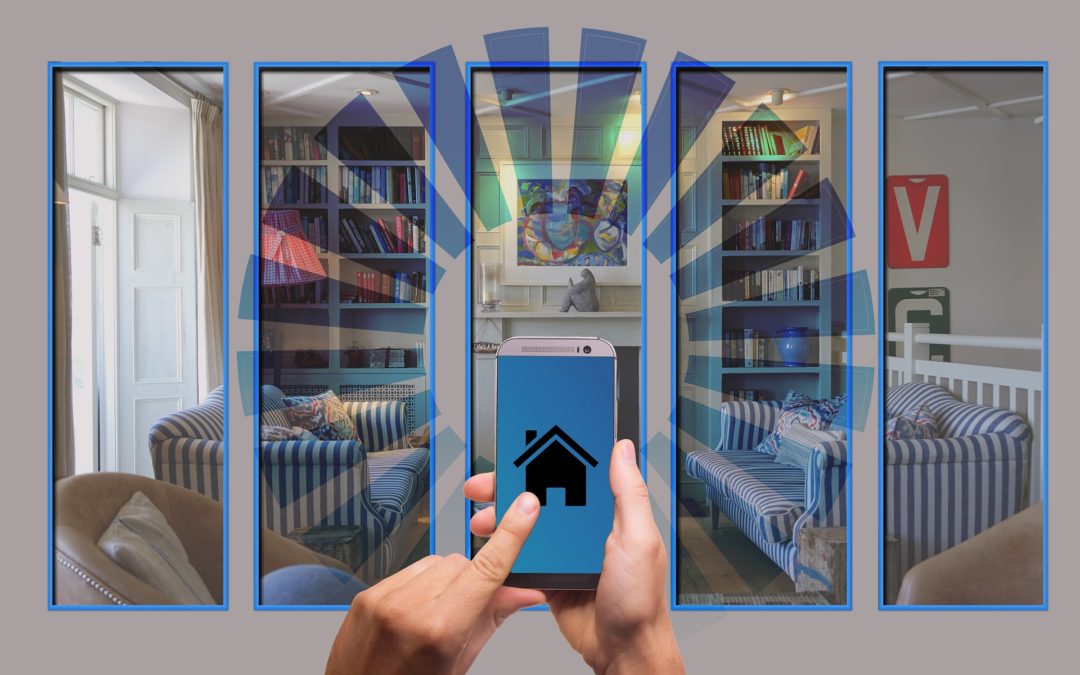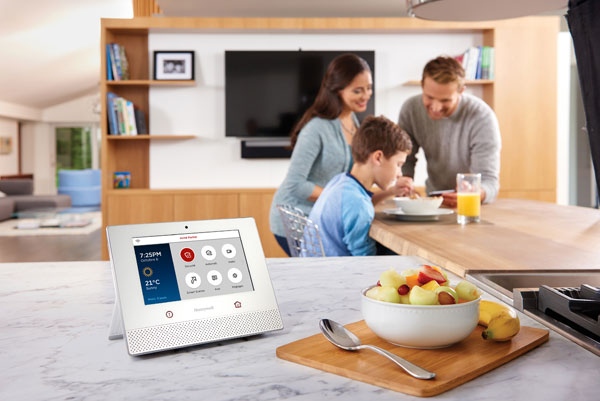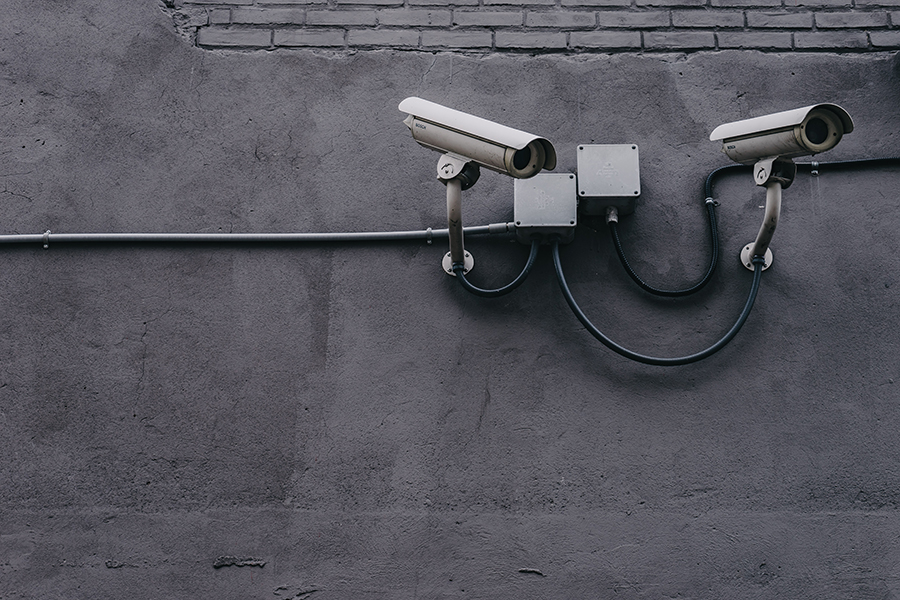
by Tommy Smith | Mar 25, 2021 | HOME SECURITY TIPS
Now that you have secured your residence with a state-of-the-art KMT home security system. You saw the stats on how a security system can both deter and detect intruders, protect from fire, and alert homeowners to everything from leaking pipes to broken furnaces. You have researched security providers and found that KMT Systems is local, family-owned and operated, and highly experienced. You have seen that our mission is to carry on the tradition of integrity and quality service that was started in 2005 when KMT Systems was founded. You have come to rely on the convenience of your smart home security solution utilizing devices from industry-leading manufacturers.
What Now?
One of the many benefits of a home security system is that it’s largely independent and self-sustained. Once it’s programmed, it’s mostly a matter of setting the system when you’re not home or ready for bed. However, like any electrical appliance in your home, there are a handful of routine tasks you can perform to help extend the life and efficiency of your alarm system. By performing these tasks regularly, you can help to ensure your system protects and provides as well as it did on day 1.
Perform Regular Communication Test
Communication with a local monitoring center is the central role of a professional home security system. If the KMT Security Monitoring Center is not receiving your signals in an emergency, our operators will be unable to dispatch police, fire, or medical personnel to your location.
KMT Systems monitored customers have their systems programmed to send test signals to our Monitoring Center regularly. If we do not receive a signal at the appropriate time, our operators will call and let you know that there may be something going on with your system so we can find a way to fix it promptly. If you’re heading out of town for an extended period of time or just want to check the general health of your system, it doesn’t hurt to send a test signal yourself. Our team of operators in the Monitoring Center can work with you to put your system in a test mode, which allows you to send signals to them without alerting emergency services. By doing this, our operators can tell you if we’re receiving alarm signals from your system and you can see for yourself how quickly we receive them.
Your field devices – door contacts, motion sensors, and more communicate with the alarm panel as well and also need to be tested. If a glass break senses a shattered window, it sends a signal to the alarm panel, which sends a signal to our Monitoring Center. Therefore, it can also be beneficial to test the individual devices on your system as well. When calling our Monitoring Center and putting your account in test mode, you can go around your house and set off every device individually and check to make sure our operators receive the signal. Doing so ensures your system will function properly in the event of a real emergency and can help to prove your system is still functioning as it should.
Change Out Your Batteries
Newer home security systems often use wireless field devices for less invasive installations and more adaptable mounting options. Like all wireless devices, wireless security sensors run on batteries that need to be changed out every so often. While manufacturers estimate batteries to last three to five years in such devices, some devices that draw a lot of power or are sensing continuously may drain faster. Your KMT Security alarm panel will alert you when a battery in a device is nearing the end of its life cycle and, eventually, when the device has stopped communicating because the battery is dead.
Taking care of the battery issue ahead of time can save you from heartache in the future. What if you’re on vacation and you receive a call from the KMT Monitoring Center informing you that your front door contact is no longer communicating! While you may be able to get away with replacing batteries every few years, switching the batteries out regularly every year, low battery or no can help to prevent device communication loss from occurring down the line.
Sidenote: Changing out devices sends a signal to our Monitoring Center indicating that someone is tampering with your system. Be sure to call our operators before changing batteries out so they can put the system in test mode so we know to temporarily ignore these signals.
Checking For Wear and Tear
When you have changed out the batteries in your devices, it doesn’t hurt to inspect the state of the sensors themselves. Are they still mounted correctly? Are they dirty or dusty? Are they damaged in any way? If a device is looking worn for its wear, it might be time to have an KMT Systems technician out to repair or replace it. Your home’s security solution operates under the assumption that every device will function properly to provide proper coverage, and if even one device isn’t sensing properly or was damaged by environmental factors, it’s essential that the problem is addressed promptly.
Keep it Professional
Performing routine maintenance can go a long way in getting the most out of your security system. At the end of the day, the best way to maximize your system’s longevity is by entrusting routine maintenance to those you bestowed to install it. KMT Systems fields an entire team of preventative maintenance technicians whose job it is to inspect, test, and maintain both residential and commercial KMT security systems. Signing up for preventative maintenance ensures a visit from one of our technicians to check general communication, change out batteries as needed, and inspect your devices to determine if there are any repairs needed.
By investing in a KMT Security System, you’ve created an environment of safety and convenience for you and your family. Secure your investment with a maintenance plan by KMT Systems and years of security expertise help protect your household long into the future.

by Tommy Smith | Feb 5, 2021 | HOME SECURITY SYSTEMS
Picking the correct home security system and monitoring company can be incredibly difficult and tedious.
There are quite a few questions involved while making a decision on Home Security and the protection of your family.
What brand is the most reliable?
Do I need professional installation?
Does the company offer a security app?
Should I go with a local or national provider?
At the end of the day, there’s a lot to consider. To save time and to help you get the most protection, ease of use and value, we have put together a list of questions you need to ask before making a decision on what and who to choose for home security.
Asking the following questions helps ensure that you are making a well-informed decision.
1. Is the system professionally monitored?
Professional monitoring is the benchmark of home security. If there’s a home intrusion or emergency at home, it’s comforting to know that your home security system can send an emergency signal to alert emergency response officials that you’re in need of help.
KMT Systems recognizes that there is no substitute for having a system that is professionally monitored, which is why all of our systems come standard with around-the-clock monitoring coverage.
2. Will it withstand the home criminal toolkit?
Not all security products are designed the same. Avoid having thieves circumvent your system by ensuring that it comes with these following features:
- Crash and Smash Warranty. It’s common practice for burglars to smash a home’s security panel to disable it from communicating with the security monitoring station. KMT Systems technology can detect a crash and smash attack and signal your monitoring station regardless of such an occurrence.
- Cellular Communication – Sometimes mother nature or human interference can disrupt traditional phone communications, in which case, having our ‘cellular” feature will come in handy. This type of signaling technology is not dependent on your home’s broadband or phone line, and so it’s not vulnerable to outside attacks.
3. What else will this system protect you from?
With the emergence of new technologies, the best home security systems are now equipped to protect your home from far more than home intrusions.
KMT Systems offers a line of devices that can sense and respond to hazards, such as fire, carbon monoxide and water leaks. They can also save you time and money, solving problems like energy waste, and lost keys.
With the ability to respond to more dangers and challenges, KMT Systems offer you more value than the traditional home security system.
4. What happens if something malfunctions or stops working?
Regardless of how many cool features a security system may have, they’re virtually useless if the security system does not work when you need it. When you purchase a stand-alone security system, you are left to fend for yourself when a device or component of the system needs professional attention.
With KMT Systems, help is always a phone call away. Our technicians can be quickly dispatched to troubleshoot your system, and in some cases, issues may be fixed remotely.
5. Does it include smart home devices?
Smart home technology is more than just a home improvement trend, and it almost goes without saying that it’s here to stay. The right security system will set you up with everything you need for a smart home. In fact, it’s the easiest way to own one.
KMT Systems carries a wide range of essential smart devices, from smart locks, smart thermostats, connected video cameras, smart lights, video doorbells, and more.
Controlling an KMT Systems – powered smart home is easy. Our smartphone app controls everything, or you can use your voice with Amazon Echo. When it comes to automation, KMT Systems makes smart homes smarter.
Still have some lingering questions? Give us a call at (770) 284-3144

by Tommy Smith | Jan 21, 2021 | HOME SECURITY TIPS
One of the last things that anyone wants to go through is to return home and realize they have fallen victim to a burglary. It is devastating. It can be even worse if the act happens when you are home. If you were the victim of a burglary, would you know how to respond? How you react upon the initial discovery and following weeks can make a huge difference.
Stay Calm
As soon as you realize what has happened, you will likely experience a strong mixture of negative emotions such as fear, anger, and anxiety, and a hard spike of adrenaline. Your body WILL react to this acute degree of stress. As a response, your heart rate and blood pressure will elevate, and you will likely begin rapidly breathing. In short, you will begin to panic, and panic isn’t helpful in a moment like this. If possible, find a quiet, safe place to sit outside of your home. Relax your body and take a series of deep, slow breaths. Do not re-enter your home unless you are certain the burglar has already left.
Call The Police
Now that you have calmed down, you need to notify the authorities. The sooner you let the police know what happened, the sooner they will be on their way, and the better your chances will be to regain your stolen items. As time lapses, the burglar/s will be harder to catch, so getting the authorities on their trail immediately is essential. Follow any instructions you are given by the dispatcher or officer they connect you with.
Take Good Notes
If you were at home when the burglary occurred, or arrived while the burglars were still there, write down what you saw. Any descriptions can help. How tall they were, what their hair looked like, gender, age, race, and what they were wearing are all important physical descriptors. If you didn’t catch anyone in the act but maybe noticed some suspicious individuals around your neighborhood recently, that information can assist as well.
Do your best not to touch anything in your home. Officers will want to see the crime scene as undisturbed as possible. Altering anything may impede their investigation.
You should begin giving your home a thorough examination for any damages and stolen items. Take notes and pictures. Were any windows broken, or doors kicked in? Write it down and take a picture. What is missing? Write down a physical description of the missing item/s, what room the item was located in, and where in the room it was. If you have pictures of the missing objects, serial numbers for missing electronics, or any security camera footage of the burglars, provide it to the officers.
File An Insurance Claim
With a police report in hand, notify your insurance company. You will need to provide them with the report number, and several other pieces of information that are documented on the police report. Gather any receipts that are pertinent and have those handy, too. Your insurance company may send an adjuster to your home to assess the situation personally. If that happens, have copies of all of your paperwork ready. The insurance adjuster will probably take your evidence with him or her, but you should have a set of the information with you for your own records, too.
Reclaim Your Sense Of Security
One thing you are guaranteed to lose in any home invasion is your sense of security and safety in your home. It may be the most precious thing you lose. The good news is that you can get it back. If you haven’t invested in a home security system yet, now is the best time to do it. Burglars often target the same home more than once if they managed to get away cleanly the first time. A security system is the best tool for preventing, detecting, and catching a home invader. Security can make your home feel safe and secure again as well as prevent a repeat burglary. If you know how the intruder entered your home, take steps to reinforce security in that location. A stronger door, lock, or window can encourage a criminal to find a different target.
It’s always best to be proactive with the security of your home. Too many families wait until after they are the victim of a home invasion before taking the right steps to guard their home from intruders. Contact KMT Systems today and schedule a free home security consultation, and get the protection your home deserves!

by Tommy Smith | Dec 21, 2020 | Fire Safety Tips, PERSONAL SAFETY TIPS
Are carbon monoxide (CO) alarms installed and maintained in your home? Often called the invisible killer, carbon monoxide is an odorless gas created when fuels burn incompletely. The only way to detect carbon monoxide is with a working carbon monoxide alarm.
Approximately 50,000 people in the U.S. visit the emergency department each year due to accidental carbon monoxide poisoning. More than 430 people die per year on average in the U.S. from carbon monoxide poisoning. This doesn’t have to happen, carbon monoxide deaths are preventable. Follow these safety tips from the National Fire Protection Association (NFPA) and the U.S. Consumer Product Safety Commission (CPSC):
- Never use a portable generator inside your home, garage, basement, crawlspace, or shed or on your porch. carbon monoxide can seep into the house through open windows, doors, or any type of vents such as for the dryer, exhaust fans, and even openings into the attic in the roof’s overhang.
- Use a portable generator outside only, and place portable generators at least 20 feet away from your house. Use outdoor-rated, long extension cords to run power into your home.
- Have your furnace, fireplace, and fuel-burning appliances checked by a qualified professional once every year.
- Never burn charcoal inside homes or in semi-enclosed areas.
- Don’t leave a car running in the garage.
- Install carbon monoxide alarms on every level of your home and outside each separate sleeping area. carbon monoxide alarms should have battery backup.
- Test carbon monoxide alarms once a month, and replace carbon monoxide alarms if they fail to respond correctly when tested.
- Know the symptoms of carbon monoxide poisoning: headache, dizziness, weakness, nausea, vomiting, sleepiness and confusion.
If you suspect carbon monoxide poisoning, or your carbon monoxide alarm sounds, get outside to fresh air immediately, and then call 911. If you live in an area without access to 911, call your fire department.

by Tommy Smith | Dec 8, 2020 | BUSINESS SECURITY SYSTEMS, HOME SECURITY SYSTEMS
KMT Systems offers Alarm Monitoring as one of our primary services to help protect lives and property in homes and businesses. Popularized in Hollywood TV shows & movies, alarm monitoring has changed drastically in the last few years, providing better results than the classic security guard sitting in front of a wall of televisions with a doughnut and spilled coffee.
Alarm Monitoring Improvements
Security tools like video cameras and motion sensors have improved drastically to help improve false alarm rates, and deliver reliable, loss-prevention tools.
Now, artificial intelligence and integrated technology can do the majority of monitoring work.
In fact, modern security technology can:
- Distinguish burglars from other moving objects
- Alert operators and provide real-time footage using KMT Systems service
- Send automatic notifications to property owners via push, email, or text notifications
- Eliminate wasted time watching a wall of monitors and recordings
Alarm Monitoring Technology
Technological advancements have made it possible to remove on-site security guards and people watching a wall of monitors. That form of security monitoring is ineffective and is riddled with the potential for human error.
Now, security cameras can be directly integrated with additional security devices, and the alarm monitoring center to provide direct alerts when an alarm is triggered.
For example, if a burglar opens a door and trips a motion or door sensor, the camera can activate and send a video feed directly to an operator who can then make calls to police and property owners or in the case of an home security system it can send a push notification straight to your mobile phone.
The Alarm Monitoring Process
Advancements in the alarm management process have helped ensure consistent, meaningful responses. Now, you don’t have to worry if the person protecting your home is distracted, playing with their phone browsing social media.
Instead, our alarm monitoring operators are on call 24/7, continually handling alarms, helping protect the lives and properties of tens of thousands of people, instead of just a single location.
What does the monitoring process look like?
Of course, it depends on the type of alarm that comes through, and the events that a device is looking for. As an example, fire alarms are different from security alarm protocols because of how response times influence the outcomes and benefits.
Today, most low-priority alarms can be handled by delivering push notifications to the system owner. If a battery gets low, for example, a simple text will let the owner know that it needs to be replaced.
A high-priority, on the other hand, like a fire or intrusion, will require an operator response, reaching out to police and property owners alike to inform them of the situation at hand, and allow them to respond accordingly.







